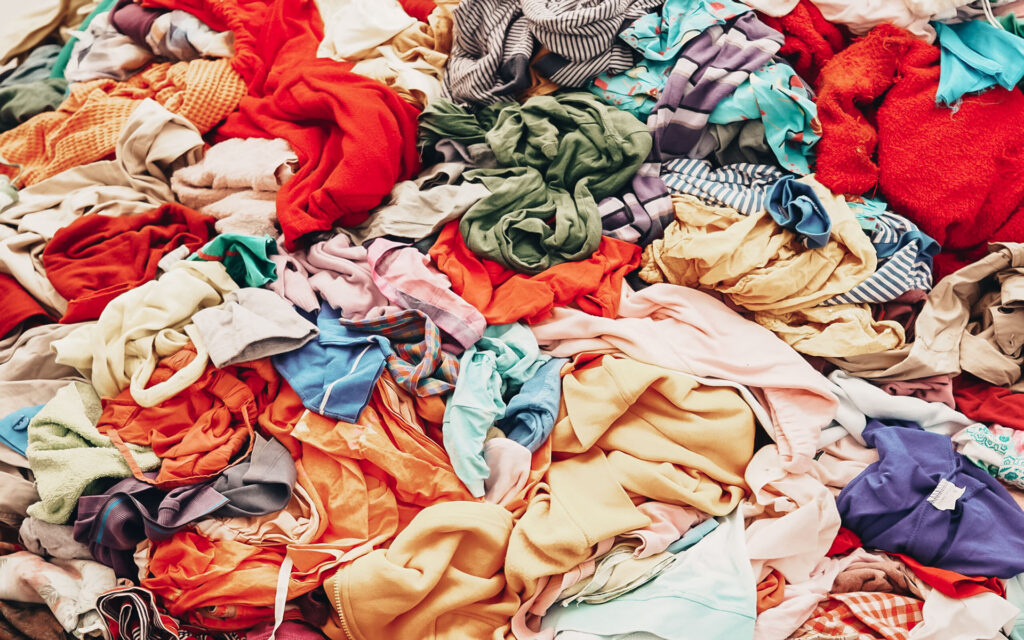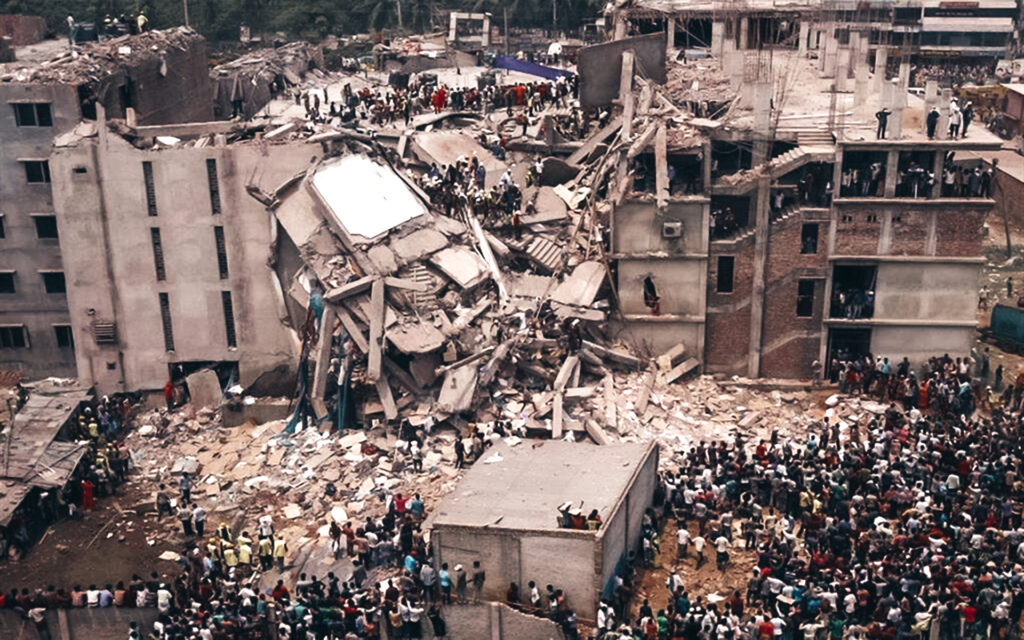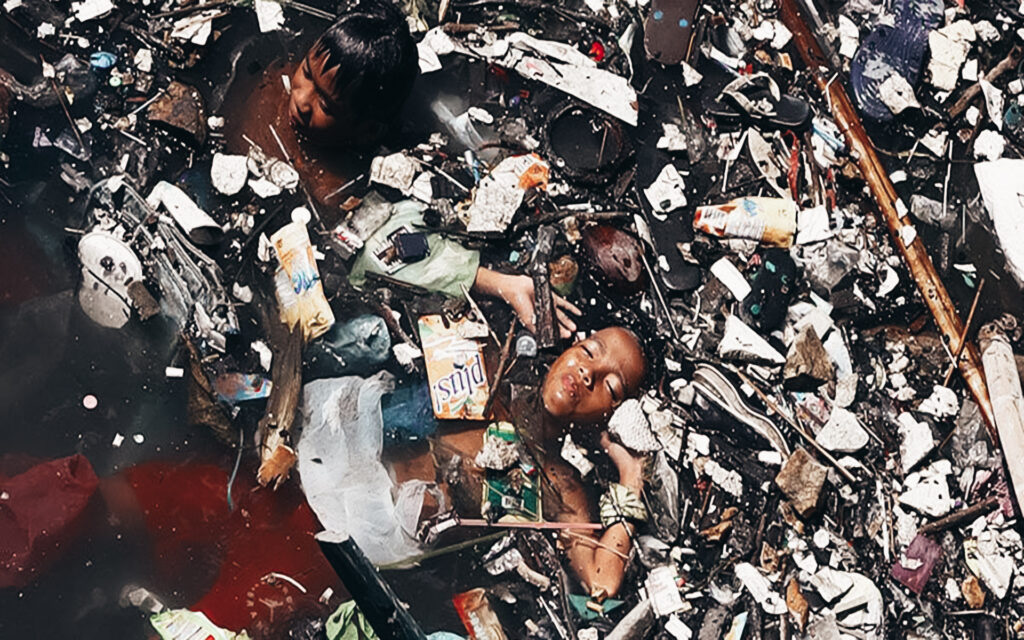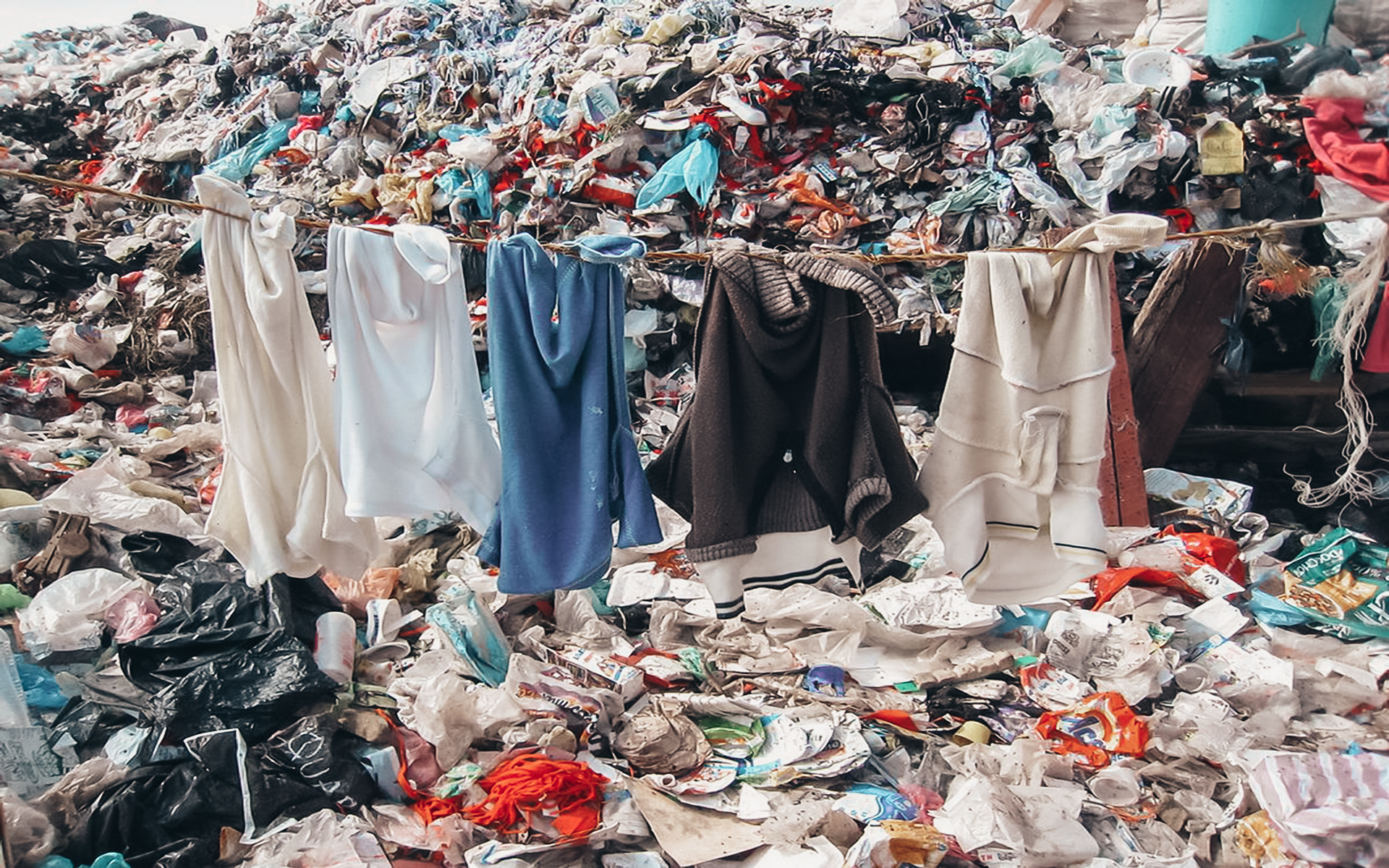Fuelled by globalisation, manufacturing advancements, and the rise of the internet and social media, fast fashion represents the pinnacle of today’s demanding, consumer-focused world. Fast fashion brands and businesses such as the giants Zara, Uniqlo, Mango, ASOS, and Shein, are responsible for producing 92 million tonnes of textile and resource waste per year, alongside accounting for up to 10% of global pollution and consuming 79 trillion litres of water.

These are the results for the production of cheap, low-quality clothing to be rapidly manufactured and shipped across the world. These companies are predominantly based in countries in the Global North. The outsourcing of their operations to regions with cheaper and less regulated labour and manufacturing processes, has led to practices of extreme exploitation and casualty. The purposes is always to meet the quick and ever-changing fashion trends that permeate the online world.
Exploring the human and environmental impacts of the fast fashion industry, this article aims to reinforce how it is companies located in the Global North, who syphon profits away from the countries they outsource their production to, are instigating and aggravating the degradation of communities and natural environments across the Global South, simply for the want of profit.
The Rana Plaza Tragedy, Bangladesh
A stark example of the exploitative practices of fast fashion companies is the Rana Plaza tragedy. It details the collapse of a garment factory located in the outskirts of the Bangladeshi capital Dhaka. A structural failure within the eight-story building on the 24th April 2013 led to the roofs and walls of the complex to give way at 8.45am, when most workers had begun their shifts. With a total death toll of 1,134, and an additional 2,500 injured, this collapse is considered the deadliest structural failure in modern human history.

The factory was directly linked to fast fashion practices. Contracted by businesses such as Primark, Mango, Benetton, and Walmart, not to mention the more murky trails of subcontracting companies, there was a complete lack of interest and accountability for these multi-million, even multi-billion dollar firms, to ensure safe, regulated working conditions for their contracted employees. Seeking to cut costs, the owners of the Rana Plaza had illegally constructed several additional floors on the top of the original building. They kept ignoring warnings and failing to get permits. The extra weight that was instrumental in the building’s collapse was a direct result of the demand for fast fashion at low prices, leading to the forfeiting of regulation and labour rights. This tragedy therefore reinforced to people both in Bangladesh and across the world the complete disregard these fast fashion brands have for their employees, prompting the customers of these brands to question the true cost of the cheap clothes they were buying
The Citarum River, Indonesia
The impact of fast fashion on water resources is severe. It is widely known to be a highly polluting practice, with the use of cheap synthetic materials and dye causing severe environmental degradation.
With estimates that 20% of all global water pollution comes from the dyeing of textiles, the leaching of toxic chemicals from factories into rivers and groundwater systems degrades the land, compromising drinking water and killing aquatic ecosystems.
One clear example of the damages from these practices can be highlighted in the choking of the Citarum River in West Java, Indonesia. The Citarum has been severely contaminated by the toxins and dyes released by the textile factories that line the banks and produce clothes for fast fashion brands. Its smell has been described as being like rotting rubbish and acrid chemicals. It is difficult to know which brands are responsible, as the accountancy when subcontracting is as murky as the river itself. This level of pollution has led to lead levels being more than 1000 times the US Environmental Protection Agency’s drinking water standard, alongside levels of aluminium, iron, and manganese well about international averages. Locals along the river suffer from conditions such as dermatitis, contact rashes, ingestion problems, as well as delays in child development, renal failure, chronic bronchitis and greater incidences of tumours. This contamination directly reduces the life expectancy and quality for the 9 million dependent on the river as a water source.
With fast fashion brands responsible for such high levels of heavy metal pollution in thousands of rivers just like the Citarum, it is critical that these companies are not only held accountable, but compensate the victims of their practices in every and any way possible.

Brand Boycott
While it is the hands of the brands and governments that exploit and allow such lax human and environmental regulation to acknowledge their guilt and begin to make changes in the practices of the textile industry, there are a number of steps that individuals are able to make to contribute to such shifts.
Buying fewer clothes, and sticking to second-hand, good quality items that are produced by companies known to have high regulatory standards, is an important investment into ethical living.
Such choices reduce the demand for fast fashion, and so help bring down the environmental and human impacts of production. Engaging with others to do the same, educating to bring down the grip that flitting trends have on consumers based predominantly in the Global North, as well as protest against state bodies that turn a blind eye to these issues, is equally crucial in making a stand against fashion exploitation. Nevertheless, it is important not to lose sight of the real criminals to blame for the damages faced by Global South communities across the world – those dressing up generationally damaging activities, like a wolf in sheep’s clothing.





